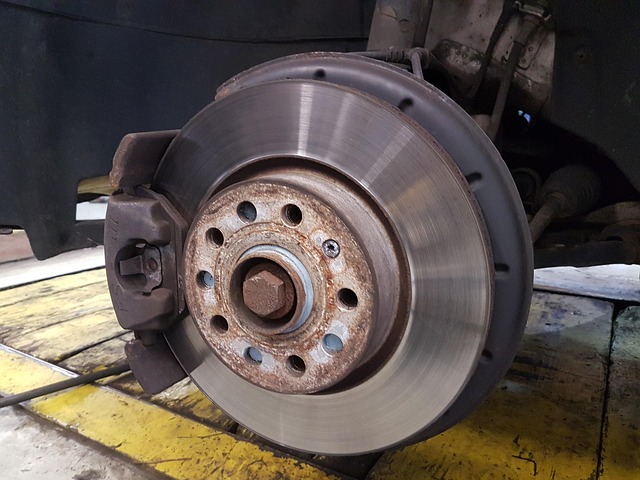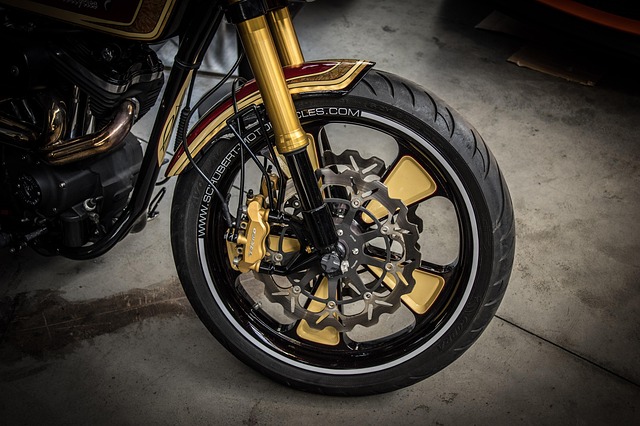Understanding a car's brake system is crucial for DIYers aiming to enhance vehicle safety and save on repairs. Key components like pads, rotors, hydraulic pipes, valves, and hoses work together to slow or stop vehicles. Pressing the brake pedal initiates a fluid-driven process applying pressure to pads for consistent braking. Identifying issues such as increased braking distance, pulling, unusual noises, or soft pedal feel is vital for DIY troubleshooting. Selecting the right brake replacements, including high-quality yet affordable pads and rotors, is essential, especially for hybrid cars with unique systems. Regular inspection and timely replacement of worn components prevent severe brake problems, enhancing safety and potentially saving on costly repairs.
Are you a DIY enthusiast ready to take on brake maintenance? This comprehensive guide is your go-to resource for mastering brake troubleshooting. From understanding the intricate mechanics of brake systems to identifying common issues, we empower do-it-yourselvers with knowledge. Learn how to select the right brake replacements with our step-by-step guide and discover practical troubleshooting tips for optimal safety and performance. Master these skills and hit the road with confidence!
- Understanding Brake Systems: A DIYer's Perspective
- Identifying Common Brake Issues and Symptoms
- Selecting the Right Brake Replacements: A Step-by-Step Guide
- Troubleshooting Tips for Effective Brake Maintenance
Understanding Brake Systems: A DIYer's Perspective

Understanding Brake Systems from a DIYer’s standpoint involves grasping the basic components and their functions. The braking system in your vehicle is designed to convert kinetic energy into heat, allowing you to stop safely. At its core are brake pads or shoes that press against rotors (or drums) to create friction, slowing or stopping the wheels. This process is facilitated by a complex network of pipes, valves, and hoses comprising the hydraulic system. When you press the brake pedal, fluid flows through these tubes, applying pressure to the pads or shoes, ensuring consistent and effective braking.
For DIY enthusiasts, selecting the right brake replacements is crucial. This involves considering both functional and performance aspects. While a straightforward brake pads replacement might be a regular maintenance task, a comprehensive hydraulic brake overhaul could be necessary for addressing issues like seized calipers or worn master cylinders. Understanding these components and their interactions empowers DIYers to tackle basic braking problems, enhance vehicle safety, and potentially save on costly professional repairs.
Identifying Common Brake Issues and Symptoms

Identifying common brake issues is the first step for any DIYer tackling brake troubleshooting. Symptoms can range from noticeable to subtle and may include increased braking distance, pulling to one side while braking, unusual noises like squealing or grinding, vibration in the pedal, or a soft/mushy pedal feel. These indicators often point to specific problems such as worn brake pads or rotors, fluid leaks, air in the system, or low hydraulic pressure.
When it comes to addressing these issues, choosing the right brake replacements is key. For those driving hybrid cars, considering hybrid car brake care is essential due to unique braking systems. Fortunately, affordable brake replacements are readily available, including high-quality brake pads and rotors that offer superior performance at a reasonable cost. Regular inspection and prompt replacement of worn components can prevent more serious brake issues down the line.
Selecting the Right Brake Replacements: A Step-by-Step Guide

When it comes to selecting the right brake replacements for your DIY projects, a systematic approach is key. Start by identifying your vehicle’s make and model, as different cars require specific brake parts. Check online or consult your owner’s manual for this information. Next, assess the condition of your current brakes. Look for signs of wear, corrosion, or damage that might indicate a need for complete replacement. This can include inspecting the brake pads, rotors, calipers, and fluid levels.
A step-by-step guide for selecting replacements could look like this:
1. Research: Gather details about your vehicle’s braking system to ensure compatibility.
2. Assess Damage: Check for wear and tear on current components. Consider replacing individual parts if they’re in good condition, but the pads or rotors show significant wear.
3. Choose Quality: Opt for reputable brands known for their performance and durability. For a safer bet, consider tire and brake packages designed to work harmoniously together.
4. Visit Local Shops: If you’re unsure, local brake shops can offer expert advice. They may also provide brake system checks to ensure your vehicle’s safety and help you make informed decisions.
Troubleshooting Tips for Effective Brake Maintenance

When tackling brake troubleshooting as a DIYer, it’s key to start with a systematic approach. Begin by visually inspecting the brakes for any signs of wear, damage, or leaks. Check the brake pads for thickness; if they’re thinner than recommended, it may indicate the need for select brake replacements. Look out for corrosion or debris on the rotors and ensure all components are properly lubricated. Using a flashlight can help reveal hidden issues.
For electric vehicle braking systems, hybrid car brake care, and even truck brake service, regular maintenance is crucial. Keep an eye on any unusual noises, pulls, or vibrations during braking. These could point to problems with the calipers, rotors, or pads. If you’re unsure about a specific issue, consult online resources tailored for your vehicle’s make and model. Remember, prompt attention to brake concerns can enhance safety and prevent costly repairs down the line.
Brake troubleshooting can seem daunting, but with a solid understanding and the right tools, DIYers can confidently navigate common issues. By grasping the fundamentals of brake systems and familiarizing themselves with potential problems, enthusiasts can effectively maintain their vehicles. When it comes to selecting brake replacements, following a structured guide ensures the best fit and performance. Armed with these tools, DIYers can not only troubleshoot but also enhance their driving experience, ensuring safety and peace of mind on the road.
